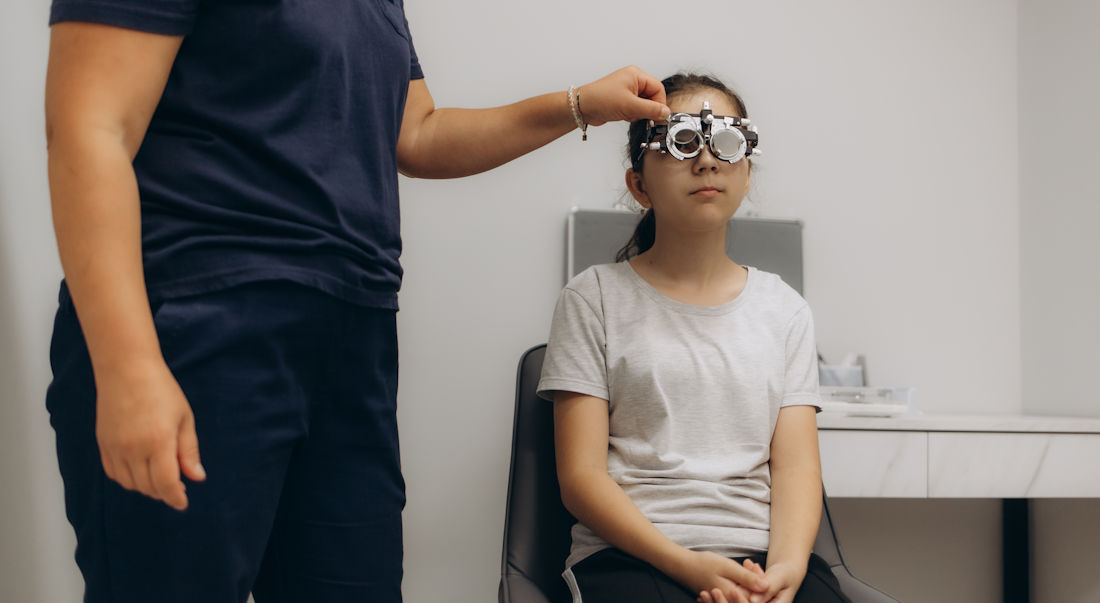Our eyes are extremely complex organs with the all-important job of helping us see and process the world around us. With so many moving parts, there’s a lot that can go wrong.
Way back in 13th-century Italy, the first-ever eyeglasses were invented and worn, which used convex lenses, to correct farsightedness. Eventually, the 17th century introduced concave lenses, used for nearsightedness before Benjamin Franklin brought bifocal lenses to the world.
The science around vision and the human eye has come a long way since then, especially when it comes to diagnosing eye conditions. But the fundamentals of vision correction have remained the same.
In this article, we’re breaking down the most common functions of corrective eyewear along with the various kinds of prescriptions people have.
Main Functions of Corrective Eyewear
Corrective eyewear and contact lenses can correct many types of vision problems. No matter the shortcomings of your vision, there’s probably a pair of corrective lenses out there that could make a big difference in your life.
Here are some of the standard and most common reasons for corrective eyewear:

Refractive Errors
The cornea and lens work together to bend light and angle it towards the retina, the light-sensitive layer behind everything else. The retina then sends electrical signals directly to the brain via the optic nerve. A refractive error refers to the eye’s shape, which can prevent light from focusing on the retina. As a result, someone with a refractive error will notice their vision is blurred or distorted.
Here are some of the main kinds of refractive errors:
- Myopia. Also known as nearsightedness, people with myopia can see just fine up close, but have issues with seeing distant objects. Typically, Myopia develops because the eye grows too long from front to back.
- Hyperopia. Also known as farsightedness, people with hyperopia have no problem with distance but can’t focus on things close up. This is caused by not enough curve in the cornea or lens.
- Presbyopia. This is a specific type of farsightedness that develops naturally as you age. Sometime after 40, presbyopia affects most adults.
- Astigmatism. Astigmatism is simply an irregularly shaped cornea or lens, and can make objects at any distance appear blurry. Some are born with astigmatism, and it can also develop at any age.
Eye Alignment
While our eyes may look symmetrical, they aren’t always on the same page behind the scenes. If both eyes aren’t aligned, this can result in what’s known as binocular vision issues, along with symptoms like double vision, eye strain, headaches and even lazy eye. Binocular vision issues and misalignment of the eyes can impact people of all ages.
Eye Strain
Some people might wear prescription eyewear to alleviate the strain on their eyes. Maybe they don’t have a serious refractive error that creates blurry or distorted vision, but when the eyes have to work too hard, they can get tired and strained. The computer is a big culprit.
For some, a very subtle prescription will do the trick to reduce that eye strain. For others, all they may need is some blue light blocking capability for long days in front of a computer.
UV Protection

UV protection is essential for your eyes. Increased exposure to UV over time can lead to corneal damage, cataracts, macular degeneration and ultimately decreased vision.
For that reason, it’s always a good idea to wear sunglasses outside. You don’t need a unique prescription for sunglasses – your optometrist will simply copy over your prescription to a new pair of glasses with powerful UV-blocking capabilities. Then you’re ready for the sun!
Types of Prescriptions
Almost any kind of vision issue caused by refractive error or other factors can be paired up with a prescription to significantly improve vision. Simplified below, there are a few different kinds of prescriptions you could have along with a number of features.

Single Vision
A single vision prescription is used to correct just one distance, whether that’s Myopia, Hyperopia or astigmatism. The entire surface of the lens has the power of one prescription, enhancing vision either close up or at a distance.
Bifocal
A bifocal prescription corrects for two separate vision issues. These prescriptions have a visible horizontal line separating the two prescriptions ares. The lower section is for aiding near vision – for tasks like reading, while the upper section helps you see at a distance.
Trifocal
A trifocal prescription is a type of multifocal lens with three separate prescription zones. Trifocal eyewear will have two visible horizontal lines, with the middle section aiding vision at an intermediate distance, along with sections for near and far.
Progressive
Progressive lenses can accommodate multifocal prescriptions and help with vision at all distances. The difference is, there are no visible lines on the lens. Instead, the prescription progressively shifts depending on which part of the lens you look through.
Prism Lenses
Prism lenses are a special kind of prescription designed for binocular vision issues. While standard prescription eyewear helps with refractive errors, these lenses shift the images in front of someone to create a clear, aligned and singular picture.
High Index Lenses
High index lenses are a feature that can be incorporated into prescription eyewear. These lenses are made from a thinner and lighter material compared to traditional eyewear. These lenses are a little more visually appealing and can reduce the magnified appearance of the eyes in strong prescriptions.
Photochromic Lenses
Photochromic lenses remove the need for two pairs of glasses – one for indoors and one for outside. Using special light-sensitive chemical coatings, photochromic lenses will automatically darken in sunlight and return to clear indoors.

If you’re experiencing blurry vision, eye strain or any kind of discomfort, you could be in need of a new or updated prescription. And remember, many serious eye conditions can be diminished or avoided altogether by early detection. Don’t skip your regular optometrist visits, and be sure to bring your kids in at least once a year. Book an eye appointment online or visit Inner Harbour Optometry at our two downtown Victoria locations.
